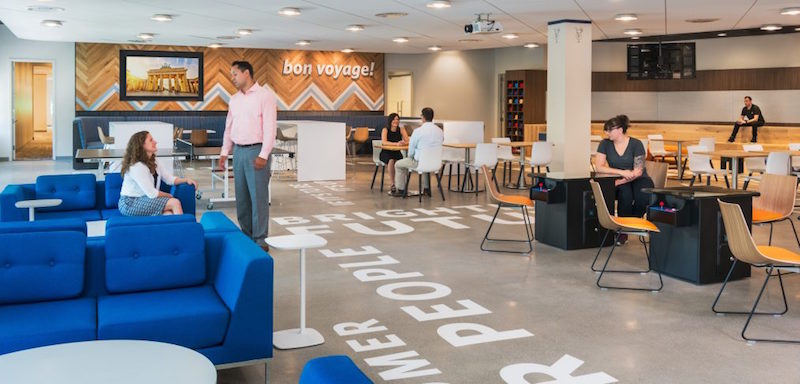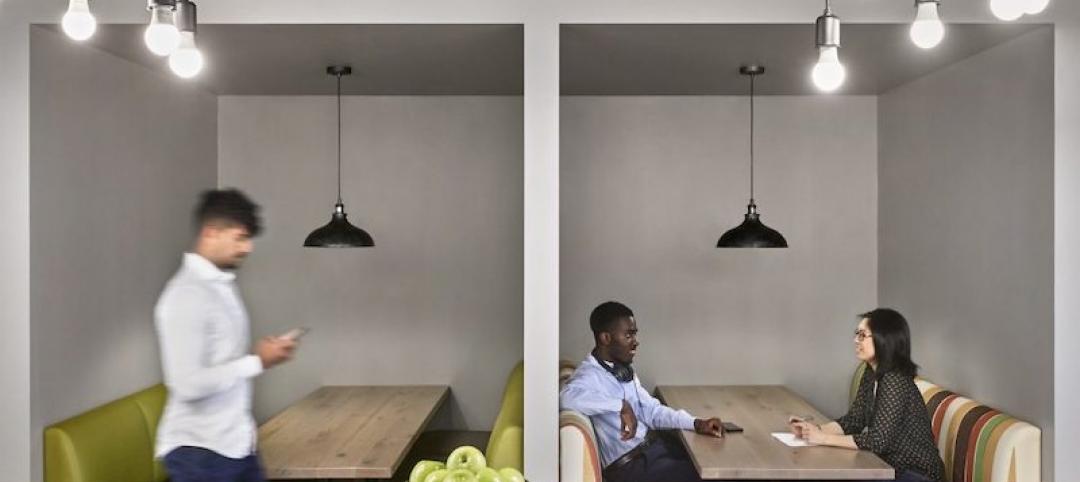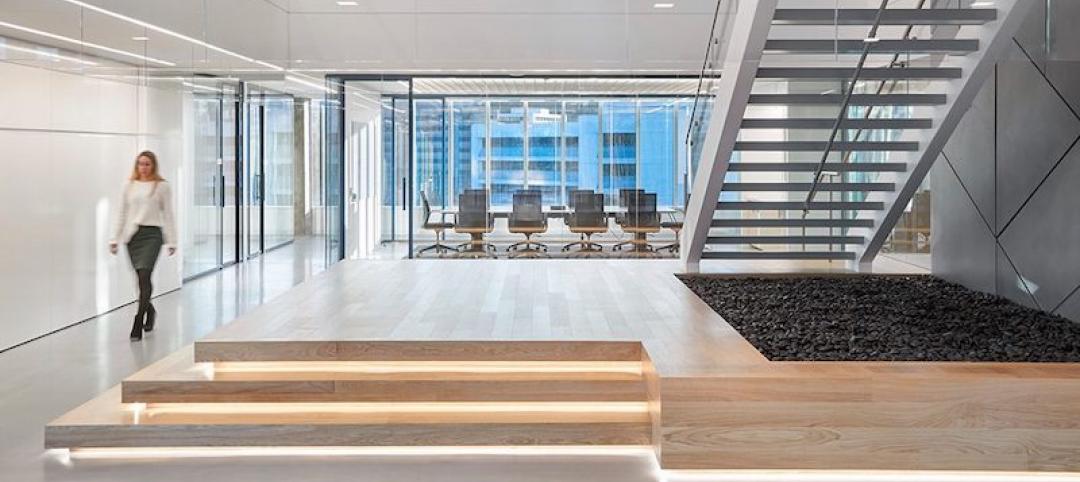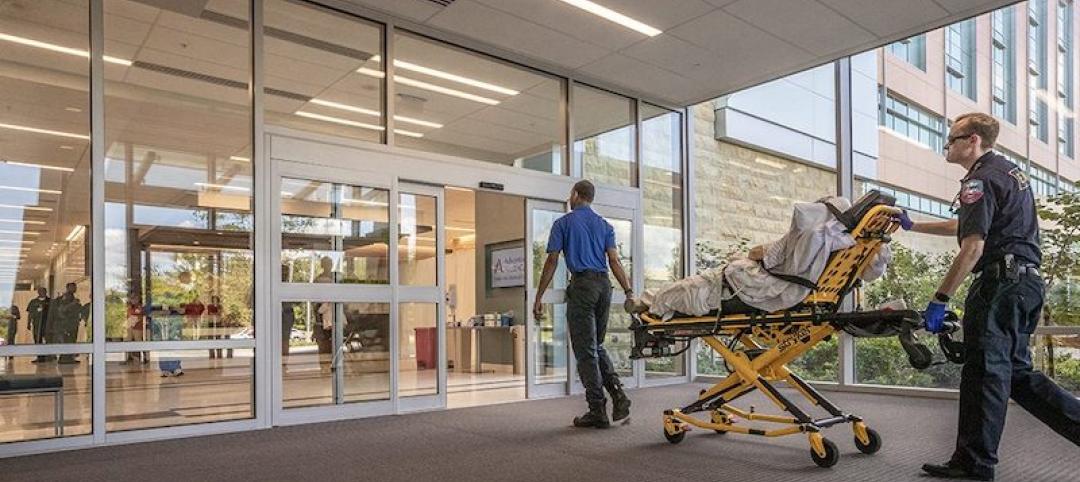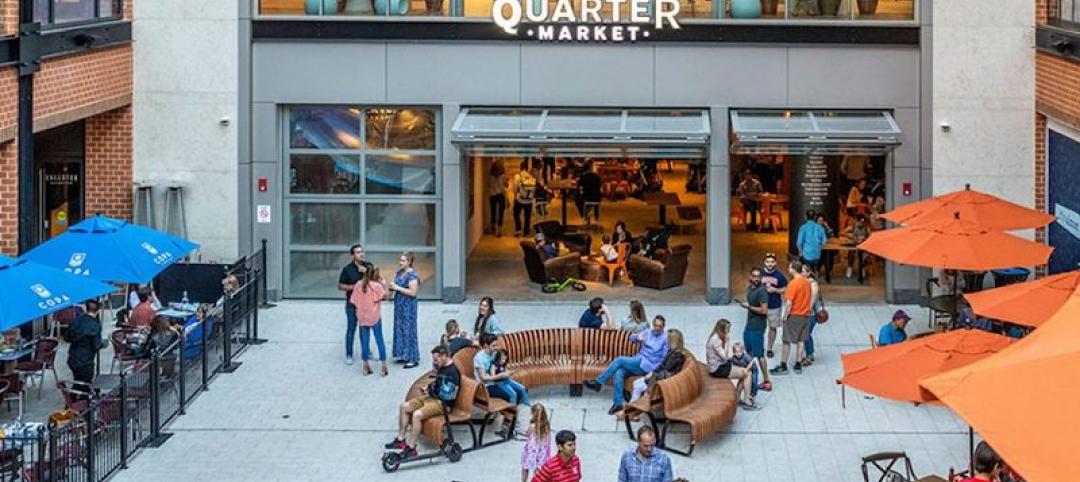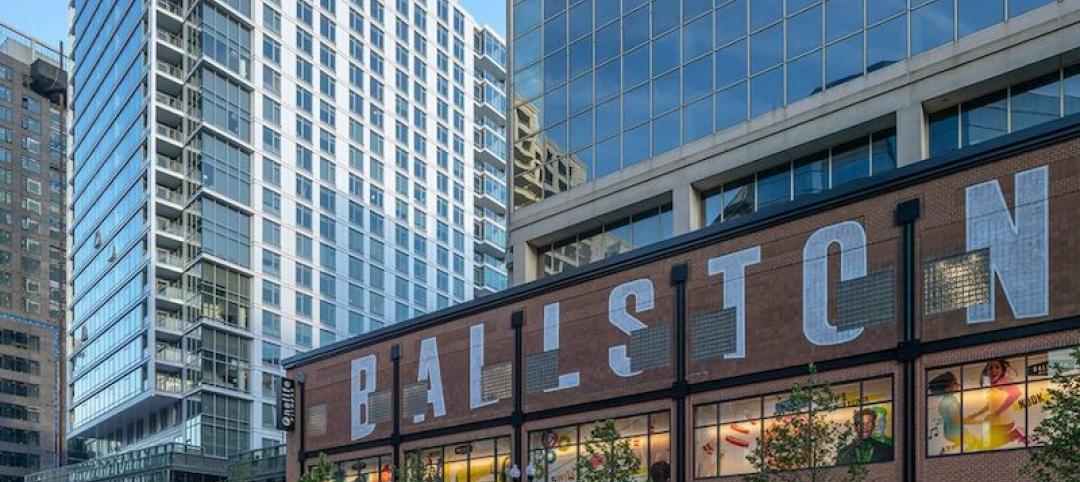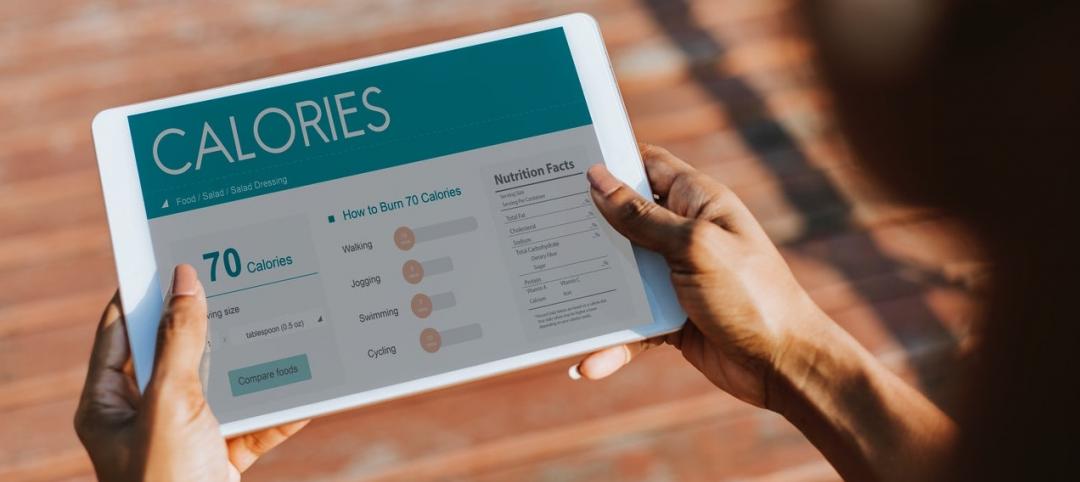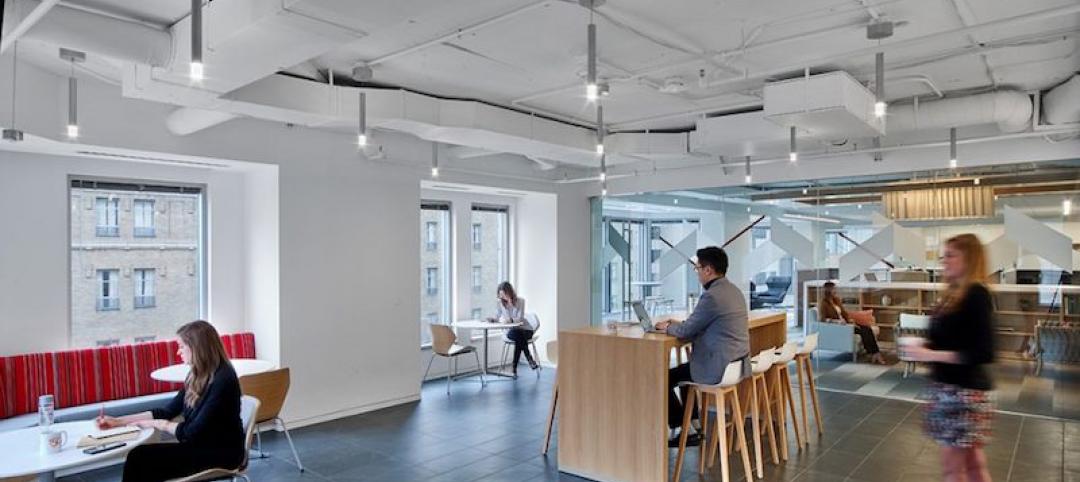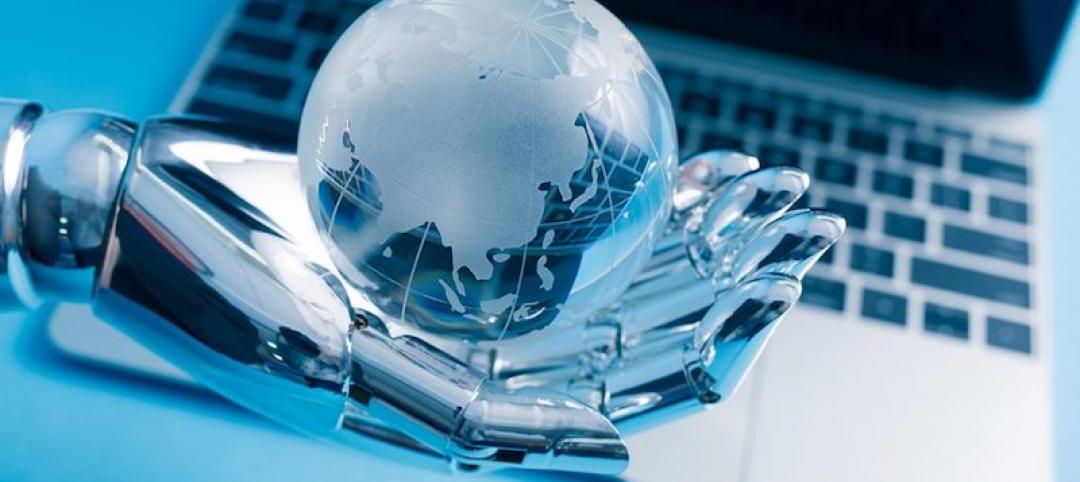Think of the last store that wowed you. The things you loved about it, whether you realize it or not, stem from deep brand authenticity, engaging spaces and a seamless education on the space and its products. In our workplace practice, CallisonRTKL’s roots in retail have inspired our workplace design and have put us in a unique position to apply these ideas to our office projects.
Even on a practical level, retail and workplace design are beginning to merge. Things like, tracking customers through stores to create optimal layouts and merchandising are coming to workplace design, where our designers now track and analyze the journey of employees through the office space to put data behind our layout, amenity, and space recommendations.
To be truly successful, we must get to know our clients on a deep, personal level. We know that integrating brand authenticity, heritage and educational elements into the workplace can transform how employees interact with the space, but we can’t do that unless we really figure out what makes our clients tick.
The Real Deal
In retail, authenticity reigns. And nothing can replace knowing and experiencing a brand. If the space or the customer experience is dragging, your consumer will feel it. Good brand design is tailored to customer engagement at every moment and the design decisions reinforce the brand, answering questions such as: What is the unique offering, the unique culture, the unique ideal? Not surprisingly, this is becoming crucial to workplace design as well. Understanding our clients and these answers drive the design. We frequently refer to design decisions being those that reinforce the brand (offering, culture, ideals). It isn’t only about reflecting identity or personality, but also reinforcing what it’s all about – continually making loyalist more loyal and impressing visitors with the company’s dedication to its brand promise.
A cohesive environment hinges on this intimate brand knowledge. We recently got to know a fashion-forward, military-inspired apparel company that has a very clear identity in their retail stores and online. But their workplace told a different story. At the business pitch, we could sense the disconnect of their space impacting their employees. We recommended an office design that builds from their brand story and applies it through the finishes, materials, visual surroundings and furniture. It has the potential to go from a lackluster, non-descript space to an ultra-urban experience that tells the story of the wartime comradery and ideals the company represents. The consistency between their physical and digital brand presence is essential as well as how they reassure clients and guests in the office space that they are secure in that very offering.
Diverse and ever-more experiential programming is another retail element creeping into today’s top workplaces. Retail brands are learning to use their digital presence to reinforce their physical brand spaces and they must keep that offering fresh or risk pushing bored customers away – activities like coffee stands and flower shops within clothing stores or staffed workout classes within the floor space are becoming commonplace. The point is to always offer something new and different. This trend has accelerated and people are beginning to demand it not just in stores, but as part of their employment experience. We predict a major uptick in rotating or evolving experiences for employees as more advanced technology becomes integrated in workplace design.
Heritage as Brand Story
Understanding a brand’s heritage and history can tell us a lot about how their offices should be designed. These brand stories ultimately stem from a company’s values, which can and should impact the design – think of the plywood “door” desks at Amazon or Weyerhaeuser’s ode to timber throughout the new headquarters.
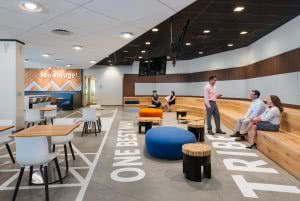
Heritage and history were embedded in our design for travel giant FC USA, where our team was inspired by the glamour and impeccable customer service in the glory days of personal travel agents. We continued that theme by creating neighborhoods for different job roles, marked by the geographical regions of the world. Each neighborhood was differentiated with distinguishing textiles, finishes and color palettes. Underpinning the history of booking travel, as well as the FC USA heritage, made for an exciting daily journey for the employee, like embedding reminders into their daily routine by naming some common areas such as their café the Lido deck.
The Learning Experience
In retail, educating the customer and teaching people how to utilize the space happens every step of the way. It even extends to the way employees talk – your Starbucks barista isn’t repeating your drink order for their own benefit, they are teaching you and others in line the correct way to order in the future. In our workplace design, we explore how core principles and workspace areas support the education of the brand.
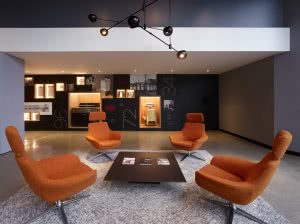
Our work with Fisher and Paykel, a premium appliance brand that expanded their headquarters from New Zealand to California, shows how important educational elements are to the workplace brand experience. Since their American employees were just as new to the history of the brand as American customers, we could align the two educational journeys. One of the ways we did this was by creating a dynamic timeline along the wall of the reception area. It went beyond a list of dates and milestones to include physical products like the first dishwasher they ever made. It’s not only visually appealing, but it helps everyone learn the company’s history and instills a sense of pride in the company.
Our roots in retail design allow us to create offices that are much more than just places to do work; they are showcases for brand stories that educate clients and employees through shared experiences—a lot like your favorite retail store.
More from Author
CallisonRTKL | Dec 20, 2021
Digital nomads are influencing design
As our spaces continue to adapt to our future needs, we’ll likely see more collaborative, communal zones where people can relax, shop, and work.
CallisonRTKL | Jun 30, 2020
The great reset and our new work life
As many countries begin to return to the office, it’s a chance to ask ourselves: what do we truly value?
CallisonRTKL | May 4, 2020
How working from home is influencing design
The lessons learned in the next few months can help shape how we work and design in the future. For now, remote work is different – and our new normal.
CallisonRTKL | Feb 26, 2020
Sustainability in a material world
The concepts of embodied carbon, zero waste, and deconstruction and reuse often run on parallel tracks.
CallisonRTKL | Jan 30, 2020
The complex dance of healthcare transitioning
Hospital employees, though excited about technological advancements, are expected to navigate a new workplace and care for their patients at the same time, all while training on new equipment and navigating a new building.
CallisonRTKL | Jan 6, 2020
Retail re-invention: Five questions to ask
Why have some malls survived their long-predicted demise, thriving and bumping with new generations of shoppers, while others have been relegated to the ash heap of deadmalls.com?
CallisonRTKL | Aug 6, 2019
Saving the American mall in 5 steps
CallisonRTKL Vice President Marc Fairbrother explains how struggling American malls can turn it all around.
CallisonRTKL | May 29, 2019
Smart buildings can optimize wellness
Employees want wellness initiatives built into their work experience, especially when they’re in spaces that can leave them feeling stiff, stressed, and sick.
CallisonRTKL | Apr 5, 2019
2019 trends in the workplace
From retention and career advancement to the ethics of inclusion and diversity, these five trends will play a major role this year in design, strategic planning and workplace development.
CallisonRTKL | Jan 28, 2019
9 tech trends to track in 2019
Innovations in voice recognition, cognitive neuroscience, and biometrics are among the trending tech topics for 2019, according to CallisonRTKL's Kristin Tilley.

